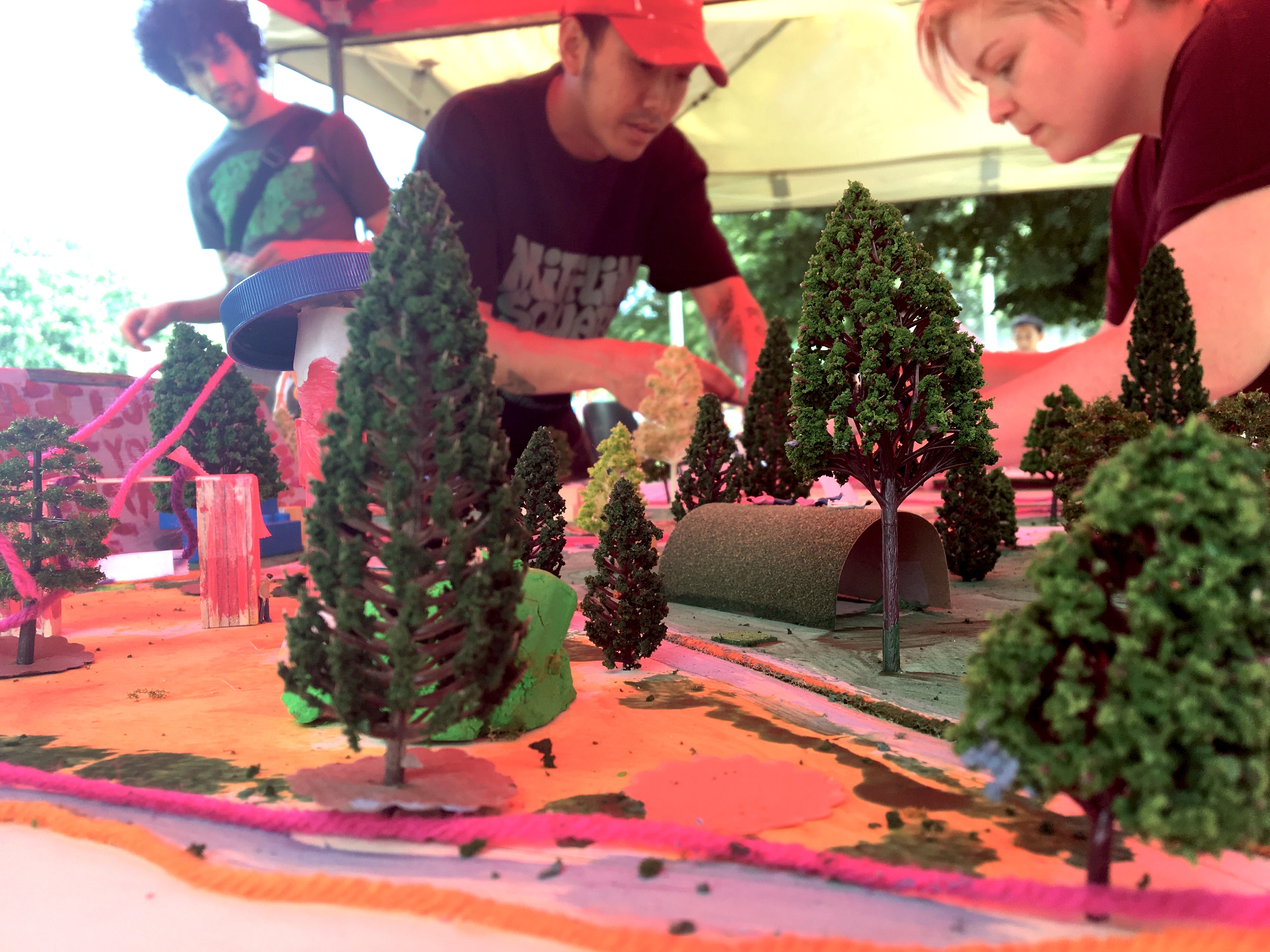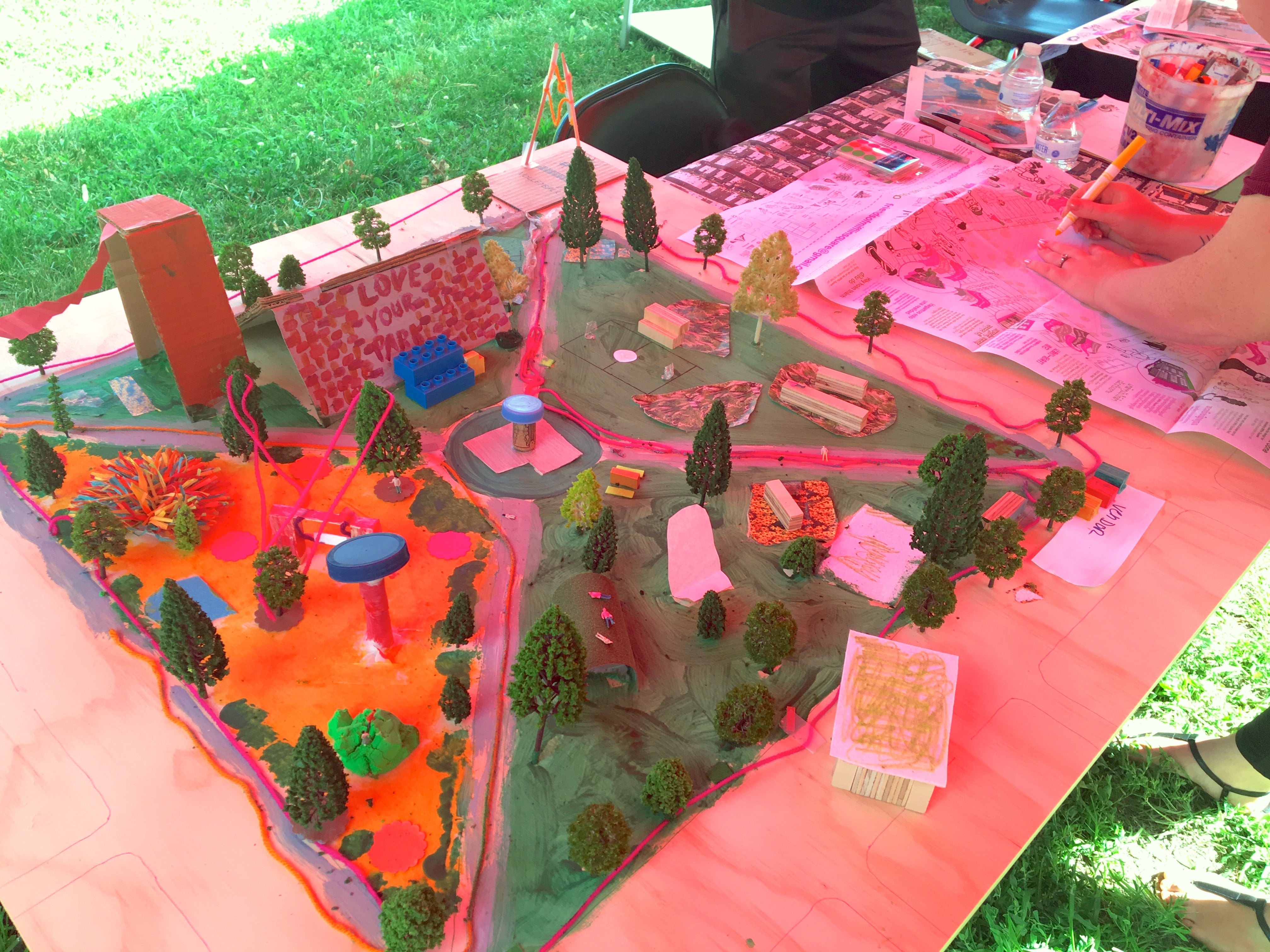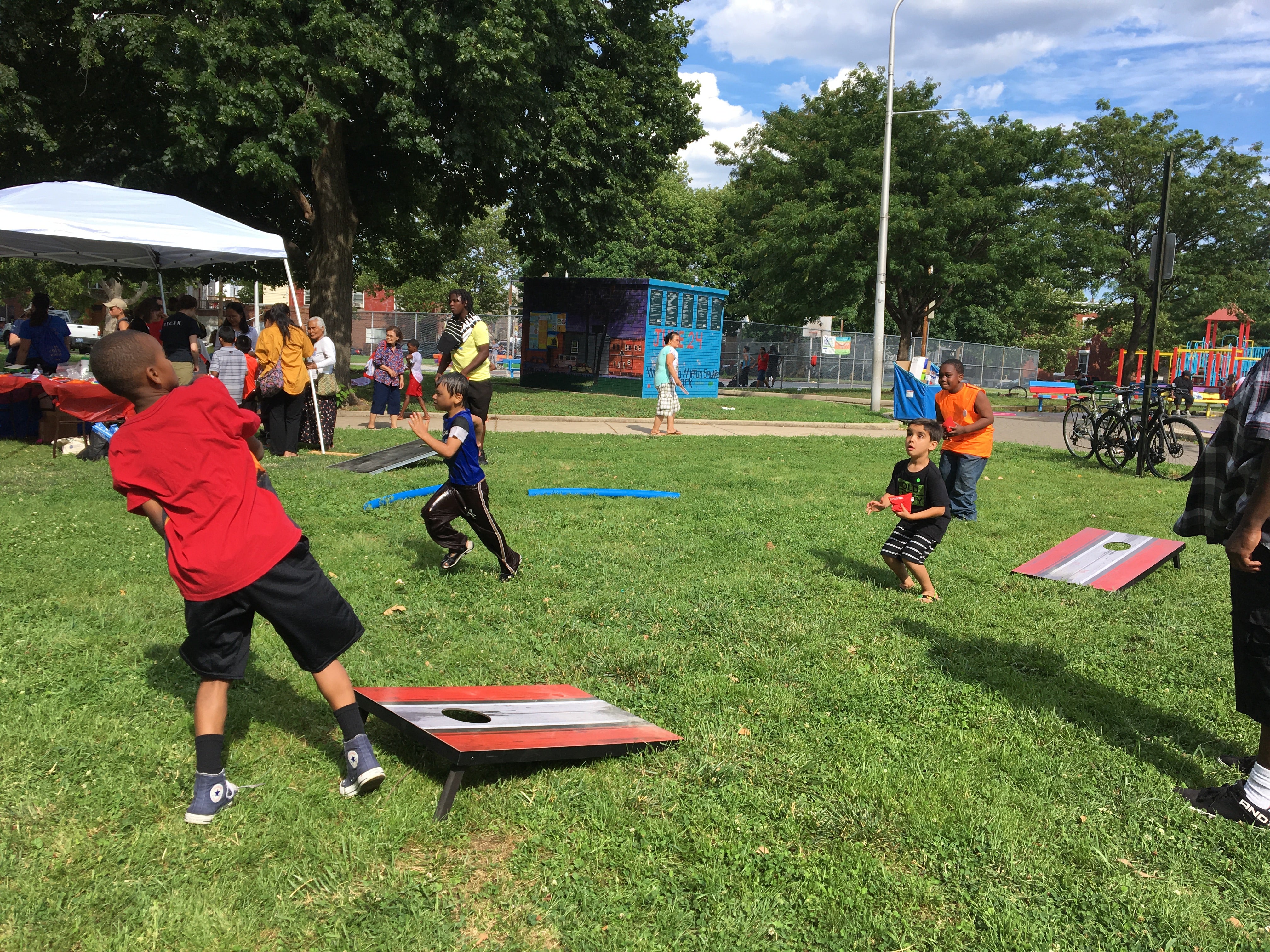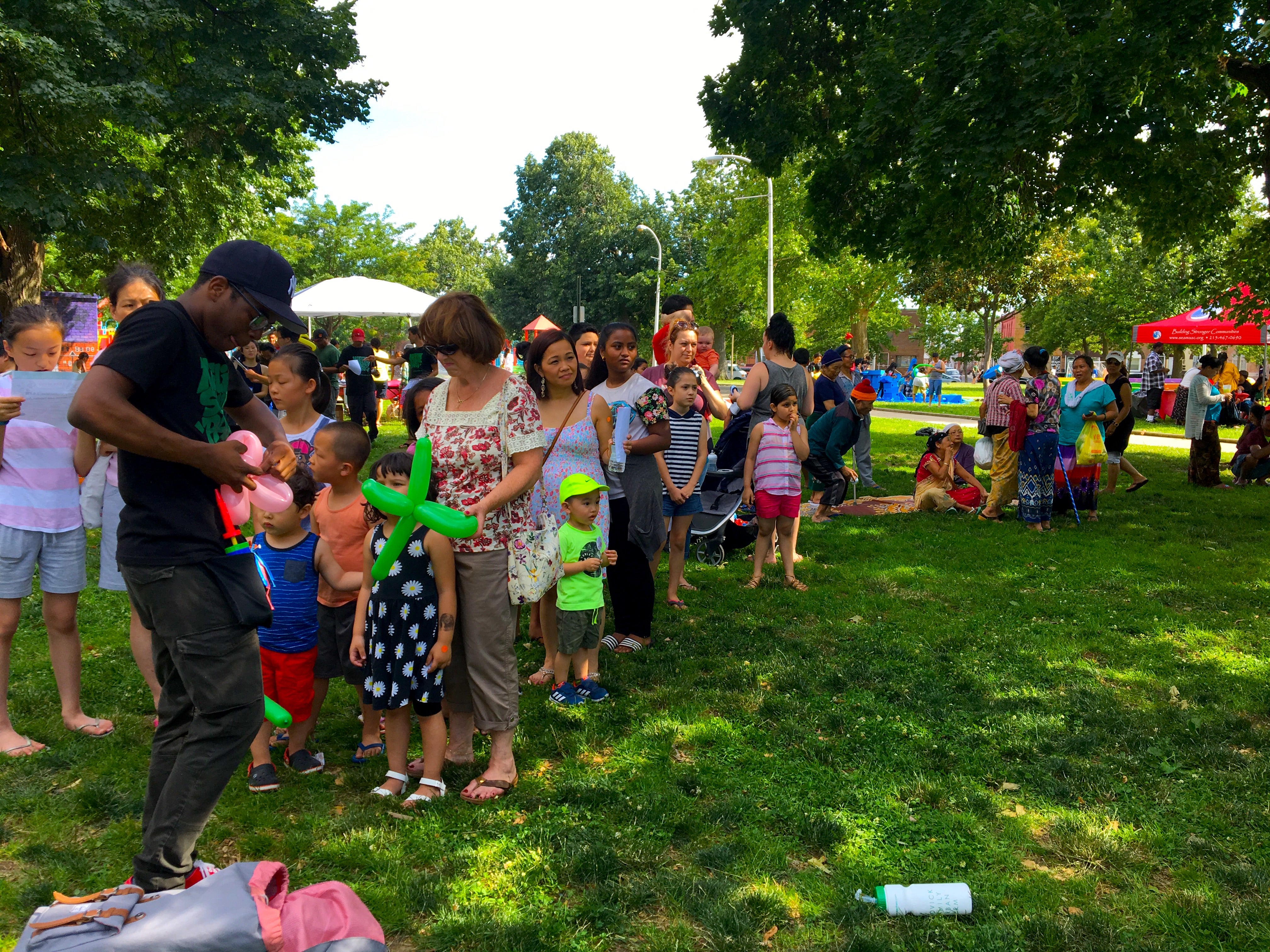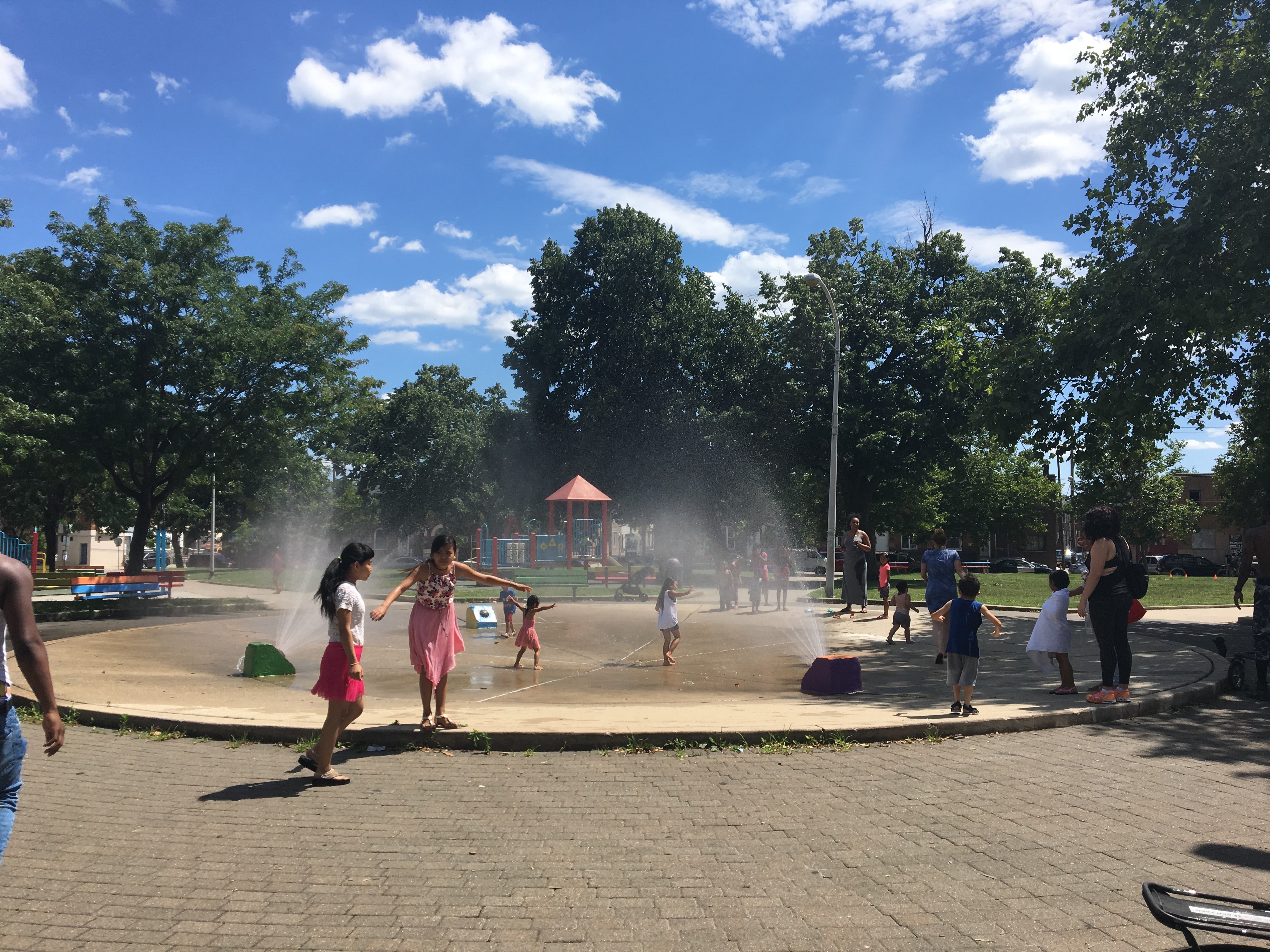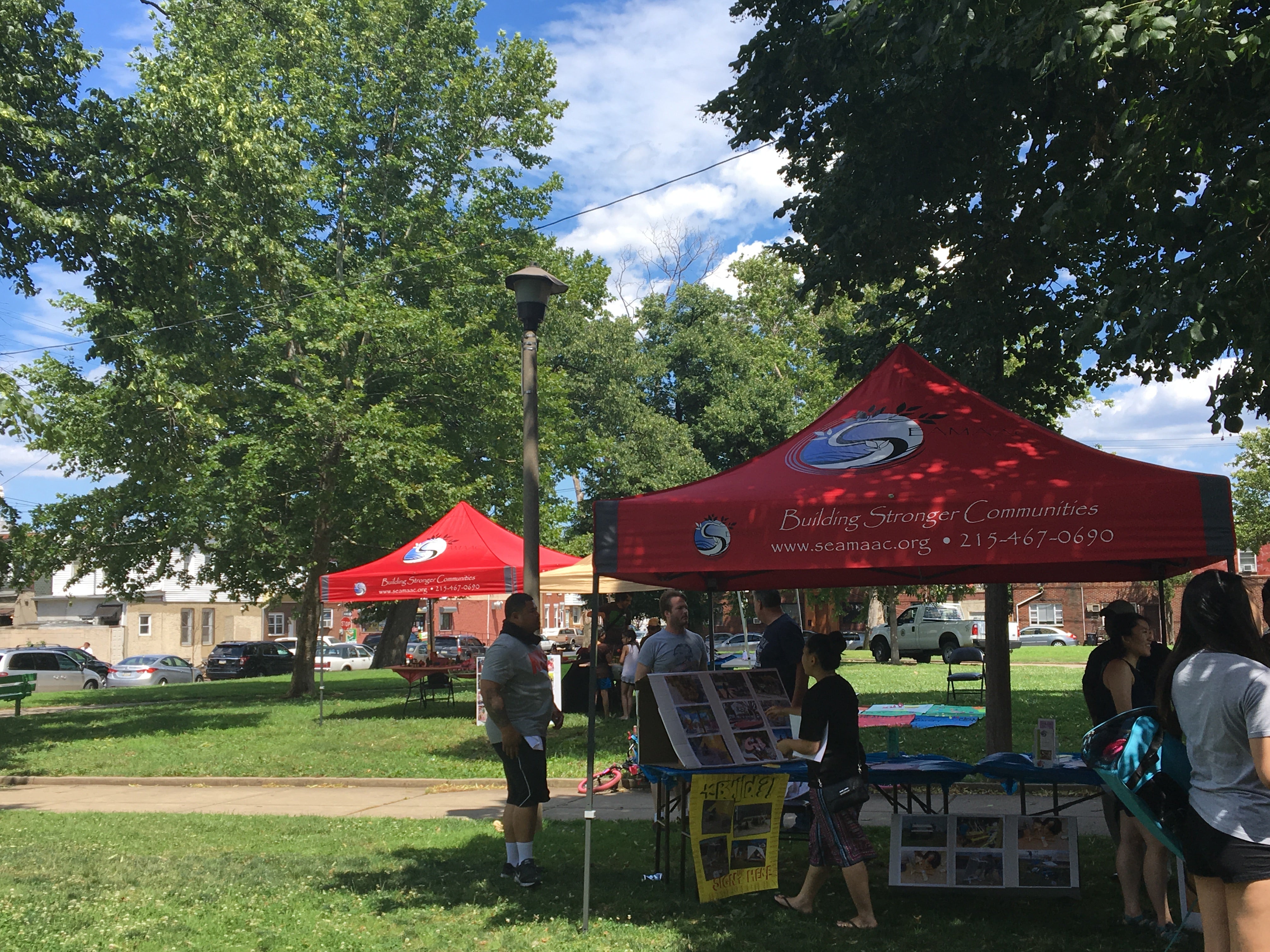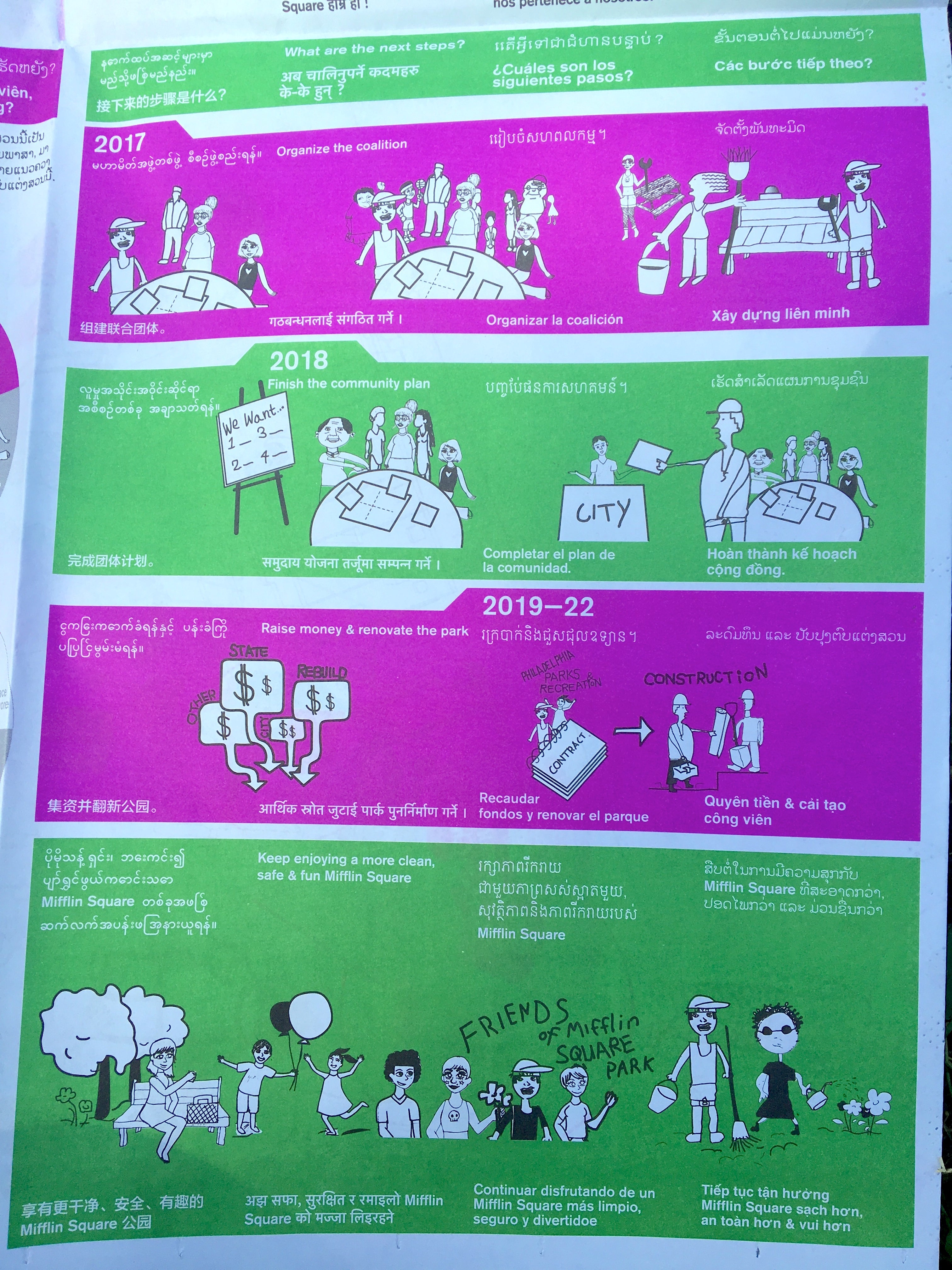Mifflin Square Park improvements start with small moves, build toward big change
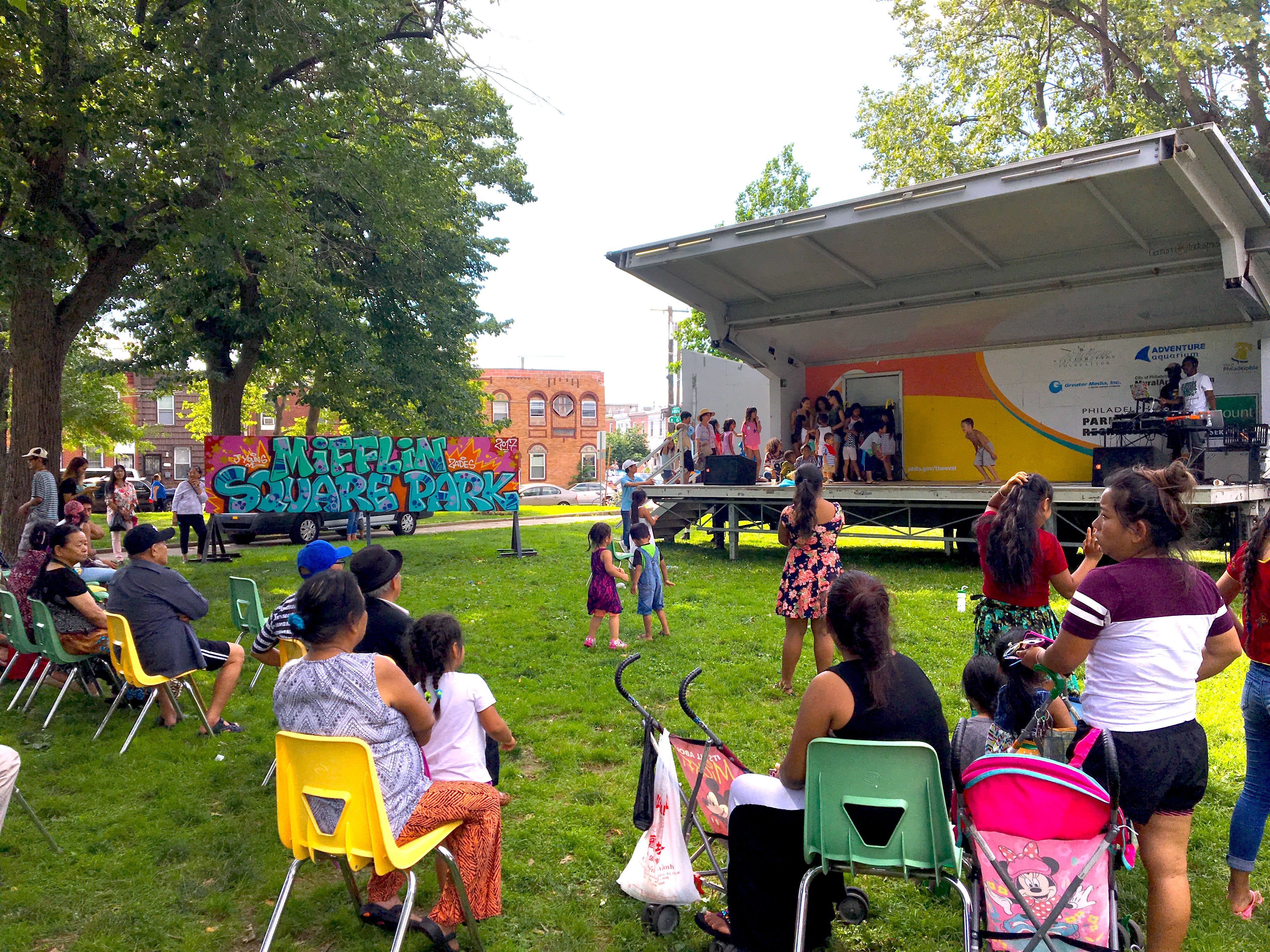
The typical hallmarks of a neighborhood convening were there: Parents dutifully pointing their smartphones at their teenagers dancing on the stage. Neighbors milling about drinking refreshments from a stand. Community groups manning booths. Games and balloon animals for kids. The not-as-typical but necessary for Mifflin Square Park: nine language interpreters holding signs for non-English speakers.
At a neighborhood convening in Mifflin Square on Saturday afternoon, the atmosphere was like a block party, not a bureaucratic community meeting, but the agenda included feedback on a redesign of the park’s seating. Across the expanse of grass, tents from the Southeast Asian Mutual Assistance Coalition (SEAMAAC), Mural Arts, Trash Academy, and Novick Family Urban Farm detailed different projects in the park. Neighbors could amble over and pick up a pamphlet or two as they pleased.
The neighborhood around Mifflin Square is in one of the most diverse in Philadelphia, and community organizers must cross language barriers as well as class and race lines to facilitate communication. And it’s essential to wrangle the park’s many users, by as many means possible, to hear their ideas and questions about Mifflin Square Park’s future, and to demonstrate to city government that it’s worth investing in the park.
Smaller early-action projects, planned and funded initially through a grant from the William Penn Foundation and a Knight Cities Challenge grant, will be implemented in the upcoming months. A community seating area, a heritage herb garden, and a scaled-back group of food vendors will become a part of the Mifflin Square Park landscape. But for groups like SEAMAAC, who organized this weekend’s neighborhood convening, these projects are only beginning.
In this corner of eastern South Philly, Mifflin Square Park is the only significant green space, and its neighbors are working to define the future of the park, against a past marked with crime and as new pressures rise with increasing real estate values rise and neighbors change.
Mifflin Square Park has a swing set, a playground, and a geyser-like sprinkler that small children ran through on Saturday. First on SEAMAAC’s wish list of amenities for the park is a restroom.
Finding agreement among all of Mifflin Square’s surrounding communities is not a one-stop feat. There are significant immigrant and refugee populations in the neighborhood, and over 21 languages are spoken. In response, the park planning process was designed to be thorough and inclusive, soliciting feedback in lots of ways, including family-friendly events like Saturday’s gathering. Ten planning workshops held over the year asked people to envision their ideal park using cardboard models. Local students collected almost 400 public responses by going door to door around the neighborhood with surveys.
“I think the toughest part is to get people from so many different backgrounds to the same table and agree on the same thing,” Thoai Nguyen, the CEO of SEAMAAC told PlanPhilly at Saturday’s gathering. In between youth hip-hop dancing on stage, speakers took the mic, and a great emphasis was placed on community engagement. Nguyen rarely mounted the stage without his young son by his side.
Welmanee Phuangmala, a Lao interpreter, was supervising the station where community members voted on which seating arrangement they would prefer in the park. In her experience, she said it’s difficult to involve non-English speakers in civic processes like this one. They aren’t sure who to trust in new neighborhoods. The organizers of Saturday’s neighborhood convening hope that they can change that. The outreach strategy has aimed to make park planning fun, inclusive, and build trust over time. By being involved in planning ways the park could change, groups like SEAMAAC hope neighbors will build a greater sense of ownership in the park’s future.
“With events like this, we’re building stewardship of the park.” Andy Toy, the Development and Communications Director at SEAMAAC said. “We’re convincing Parks and Rec it’s a good investment because people will take care of it.”
Nguyen also stressed that civic engagement by the community is essential to maintain local control of the park.
“It’s not just about the park, it’s about the surrounding community,” he told PlanPhilly. “We want to make sure that as this area is being gentrified, that they have a voice in how this neighborhood is improved. We don’t want the definition of what’s better to be defined for them.”
Reese Guo, a SEAMAAC intern from St. Joseph’s University, said that the goal was to make Mifflin Square Park “a landmark of South Philly.”
“I know it’s a high bar,” he acknowledged. “But it’s predicted that house prices will rise here, and we’re trying to keep residents in the neighborhood.”
Despite the convivial atmosphere of the neighborhood convening, the legacy of disinvestment persists. Leela Kuikel, a refugee from Bhutan and member of the Bhutanese American Organization, was disappointed that the park hasn’t really improved since he arrived at the neighborhood five years ago.
Across from the festivities, the tattered net of a waterlogged volleyball court waved in the breeze. Litter dotted the grass at the edge of the park.
Although gang skirmishes and neglect are sown into the park’s past, neighbors are tenacious in their attempts to uproot them. In their plans, the community action groups have publicly outlined their agenda up to 2022.
“It’s a major project, it’s not just events like this,” Nguyen said, gesturing to the surrounding park. “But events like this show a fraction of the potential vibrancy that could happen.”
WHYY is your source for fact-based, in-depth journalism and information. As a nonprofit organization, we rely on financial support from readers like you. Please give today.



